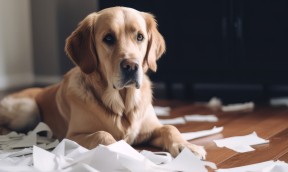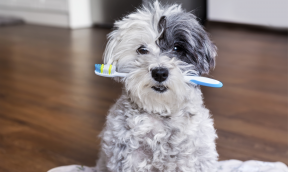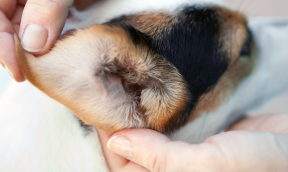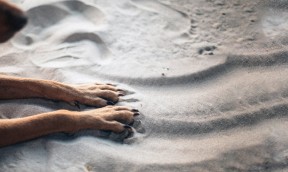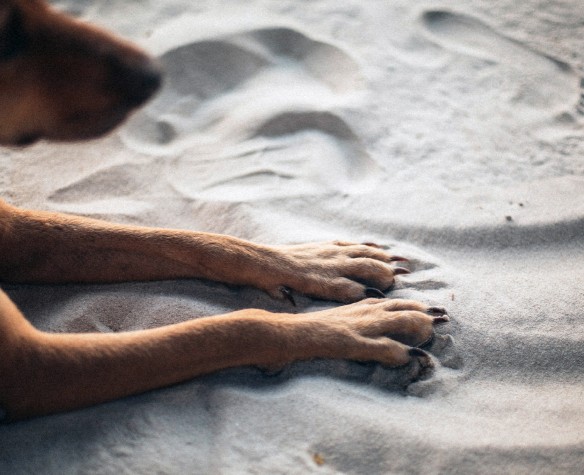
Dog paw pad care
Take care of your dog’s paw pads: prevention is paramount
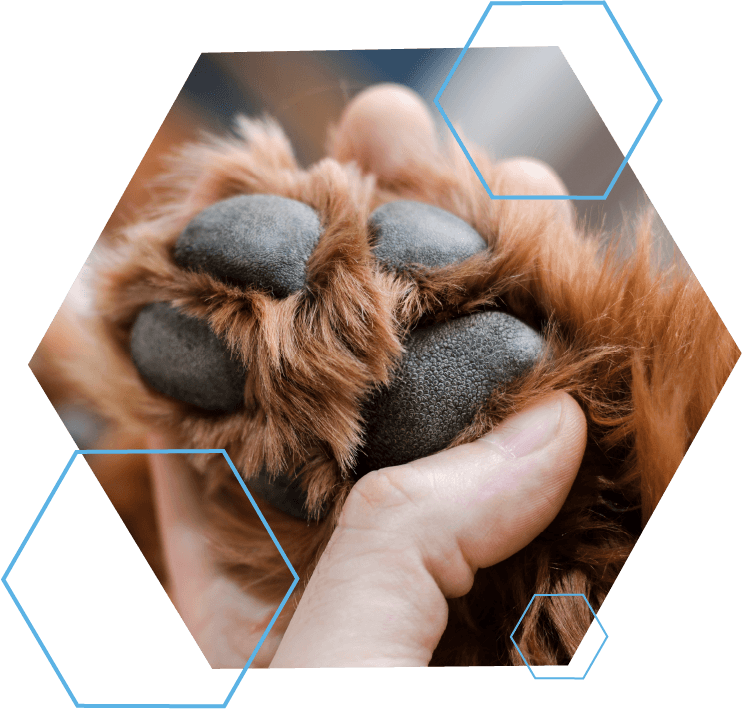 Dogs’ paw pads, made up of thickened adipose tissue which forms a thick horny layer, resemble a small sole which isolates and absorbs shock when your pet moves around. This layer hardens and thickens with the intensity of your pet’s activity, for optimum protection. However, it is essential to take care of dogs’ paw pads to keep them in perfect condition all year round. Focus on good paw hygiene.
Dogs’ paw pads, made up of thickened adipose tissue which forms a thick horny layer, resemble a small sole which isolates and absorbs shock when your pet moves around. This layer hardens and thickens with the intensity of your pet’s activity, for optimum protection. However, it is essential to take care of dogs’ paw pads to keep them in perfect condition all year round. Focus on good paw hygiene.
Why is it important to check your dog’s paw pads?
Dogs’ paw pads are exposed to numerous harsh external factors in all seasons and in all environments.
URBAN AND RURAL HAZARDS FOR DOGS’ PAW PADS
In the urban setting, tarmac is abrasive and causes paw pads to wear more quickly compared to loose ground. Opt for walks in the park as often as you can, to preserve your pet’s paw pads.
In the countryside, dogs can injure themselves more easily when walking off the lead: sharp stones, broken glass, thorns, waste, etc.
All sorts of debris can build up between the paw pads. It causes discomfort, or even minor injuries which will turn into wounds if not promptly treated.
You must not deprive your pet of his essential walks, but keep an eye on the state of his paw pads.
STRESSES ON DOGS’ PAW PADS THROUGHOUT THE YEAR
In winter, cold weather and snow dry out the paw pads and can cause painful cracks.
NB: Snow-clearing salt has a very harmful impact on dogs’ paw pads. Scrupulously avoid salted areas, to keep your pet comfortable.
In summer, heat is a real hazard. Tarmac and sand heat up very quickly, leading to a high risk of burns. During heat waves, tarmac can reach temperatures of 60°C!
If you can, aim to walk your dog in the cooler hours, early in the morning and late in the evening, and stay in the shade as much as possible during the day.
In summer, dogs also come into contact with “spikelets”, small pointed grass seeds which can become lodged very easily between the paw pads and penetrate the skin, causing abscesses. If your dog has difficulty walking or refuses to put his paw on the ground, check him out immediately.
DIFFERENT PAW PAD SENSITIVITY FROM ONE PET TO ANOTHER
Some dogs are more sensitive than others. You will soon see when something is bothering him, as there will be a change in his behaviour.
If a foreign body is clearly visible, remove it with your fingers as soon as possible or with tweezers depending on its size, then disinfect using a disinfectant suitable for pets.
Other pets do not display any signs of discomfort. It is essential to inspect your pet’s paw pads regularly to make sure there are no foreign bodies or wounds.
Useful information: Accustom your dog to paw pad care from a very young age, by checking his paw pads daily and brushing his coat. Therefore, when the day comes for you to care for his sore paw pads, he will be less reluctant to being handled.
DAILY PAW PAD CARE FOR HEALTHY DOGS
Inspect your dog’s paw pads each time you return home after a walk.
Your dog’s paw pads will be soiled after walking outdoors, and will need to be wiped clean with a cloth to remove all traces or dirt and pollution. In rainy or winter weather, rinsing with clear water then drying with a clean, dry towel will effectively remove salt and mud from your dog’s paws. This will therefore prevent your pet from bringing pollutants and allergens into your home. If you notice that your dog’s paw pad is damaged or dry, you will first need to apply some Vaseline to moisturise the paw pads between each outing.
For more in-depth care and easy application, the paw pads and nose balm will offer your pet real relief.
Hygiene advice: Small hairs grow between dogs’ toes. We advise you to trim them regularly to keep this delicate area of the paw clear. This will make it easier to identify any injuries, and debris will get stuck less easily. Also take this opportunity to trim your pet’s claws if walking is not sufficient to keep them sufficiently short. If they cause your dog discomfort when walking, he could hurt himself.
How can dogs’ paw pads become damaged?
FACTORS MAKING PAW PADS VULNERABLE
Dogs’ paw pads can become more vulnerable in certain specific cases:
- puppies and elderly dogs;
- dehydrated dogs;
- dogs with a thinner horny layer, such as urban dogs;
- dogs prone to fragile paw pads;
- skin irritation which makes them more prone to developing lesions or wounds.
To avoid your pet developing dry, damaged, cracked, burned or irritated paw pads, take care of his paw pads preventively throughout the year and not just when he has a wound which will be more or less difficult to treat. Protection is the best defence.
Nutrition advice: Keeping your dog well hydrated does not only depend on his water intake. Unless your veterinary surgeon advises otherwise, give your pet food rich in omega-3 (found in salmon for example). Coconut oil is highly bioavailable and is a lasting source of hydration for your dog, to protect the epidermis more effectively.
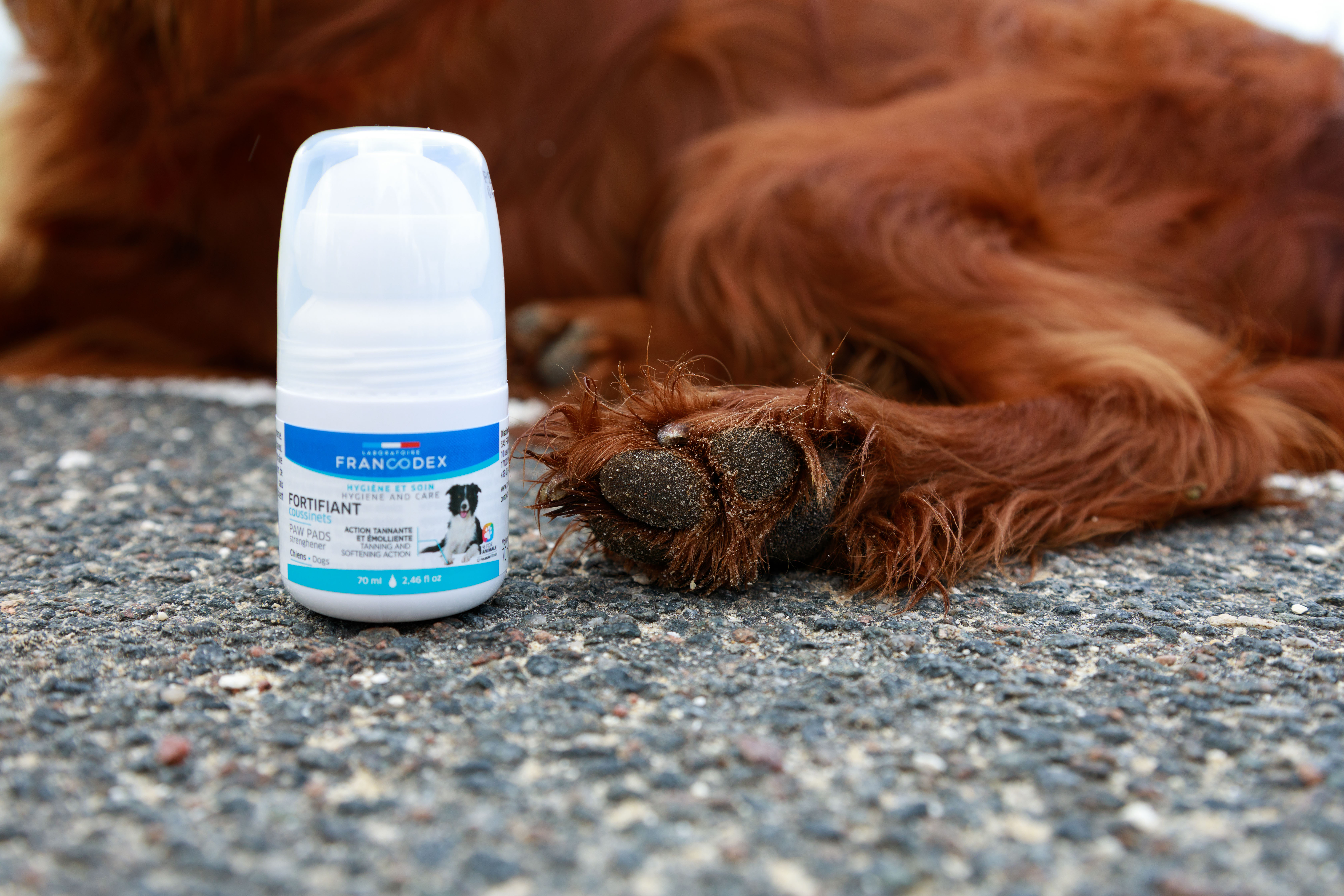
DAMAGED, CRACKED OR IRRITATED PAW PADS
Your pet’s paw pads may become damaged due to cracking, which are tiny fissures on the surface of the paw pad. These are easily treated, but can be very painful. This type of injury is common in dogs carrying out intense physical exercise or with burns due to snow-clearing salt or white-hot ground.
Cracking and irritation do not bleed, but these conditions must be treated as soon as possible with a repairing and protective balm.
PAW PADS WITH CUTS OR LESIONS
Paw pad wounds, which are more serious, usually prevent your dog from walking properly and cause bleeding.
Your dog will have undoubtedly injured himself on sharp debris.
A visit to your veterinary surgeon is essential to assess the severity of the wound. Your veterinary surgeon will provide appropriate treatment and may prescribe an antiseptic or antibiotic treatment, especially if your pet displays other signs of discomfort (fever, aggression, etc.).
You should clean the wound daily to promote proper healing, and apply a honey repair spray. You will then need to provide your dog’s paw pads with essential treatment to offer lasting care and protection.
How to care for dogs’ paw pads?
Despite taking every precaution, your dog refuses to put his paw on the ground and his paw pads are damaged. His paw pads may have fissures, large cracks or cuts. If your dog is limping, you should take urgent action and eliminate any risk of injury to the paw before treating his paw pads.
PREPARATION AND IMMOBILISATION TO TREAT YOUR DOG’S PAW PADS
The hardest step is to keep your dog immobile during treatment and to avoid him licking his paw. The whole procedure will be easier if there are two of you, otherwise, calm your pet and ask him to lie down. You can use a pet cone if he hampers your movements with his muzzle.
DISINFECTION AND EXTRACTION OF THE FOREIGN BODY FROM THE PAW PAD
Disinfect the paw using a cleaning and antiseptic wipe, and apply honey repair spray. Otherwise, rinse the paws with a mild soap and water. Dry thoroughly. Carefully examine your pet’s paw, using a magnifying glass if necessary, to see if a foreign body is lodged between the paw pads, and remove it if necessary.
CARE AND PROTECTION WITH PAW PAD REPAIR BALM
Then apply our paw pad and nose balm which acts as a genuine deep treatment for your dog’s fragile paw pads and nose.
It consists of a blend of almond oil, shea butter and beeswax, giving it nourishing and moisturising properties. It is also perfect for cats’ paw pads.
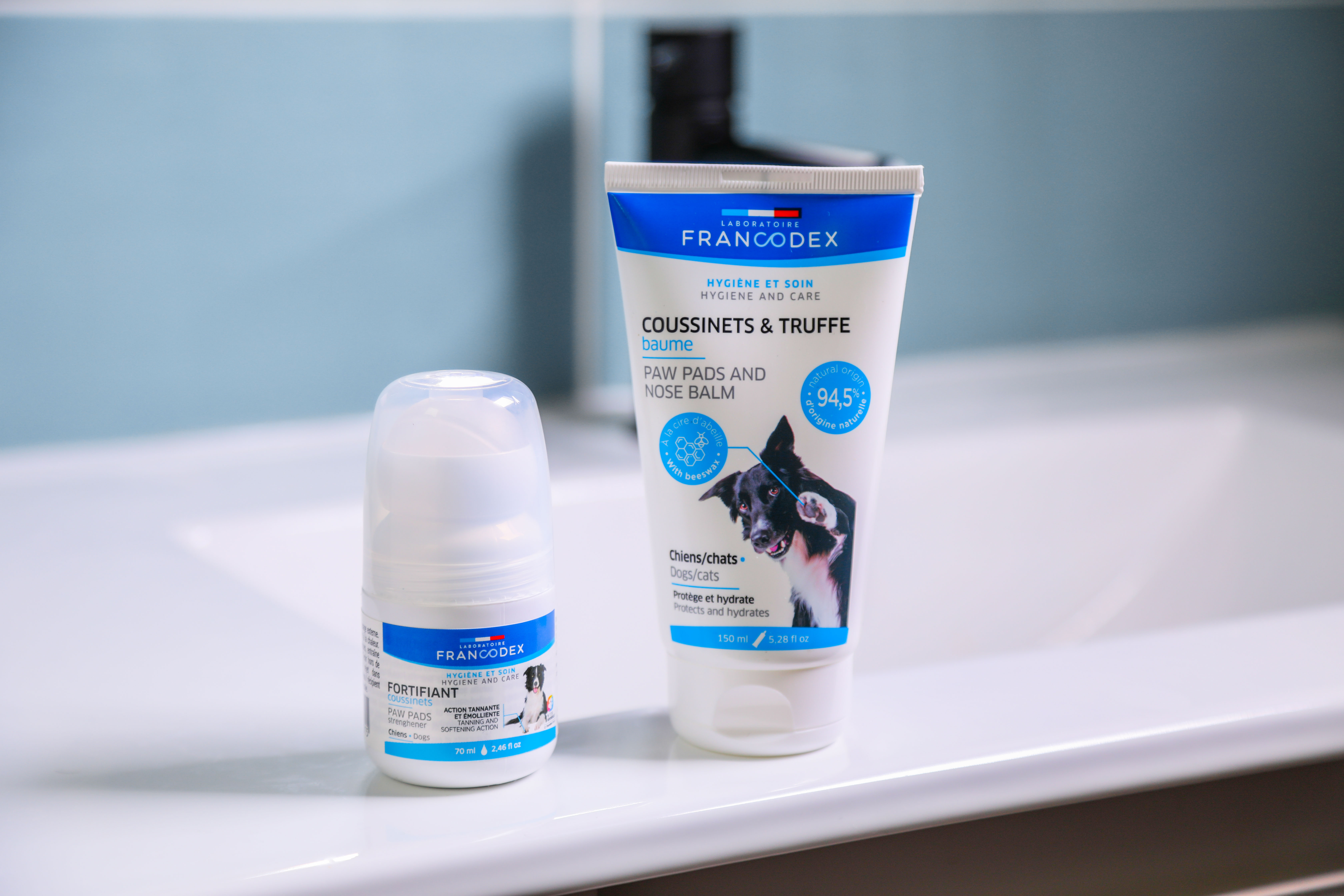
How to protect your dog’s paw pads effectively?
As you can see, the best thing is protection through prevention. Dogs’ paw pads are designed to be robust and to walk on all types of terrain. It can take several days to several weeks for a paw pad to heal, especially in poor weather.
We recommend using the paw pad protector for prevention. Owing to its moisturising and tanning action, it strengthens the paw pads with a lasting effect. Its roll-on format makes it quick and easy to apply, even for the most reluctant dogs. Apply one to three times a week, according to the season and your pet’s activity.
You can choose to use protective boots or shoes depending on the state of your dog’s paw pads. Not all dogs are happy to wear them, but they help keep the paws dry while going out for walks during treatment.
You now hold all the cards to protecting your dog’s paw pads and allowing him to get the most out of his walks, whether in an urban or rural setting.
Visit our partner pet stores to discover our dog paw pad care and protection products.
Article drawn up with the assistance of
Dr Marie-Pierre POUDRAI, Veterinary Surgeon

